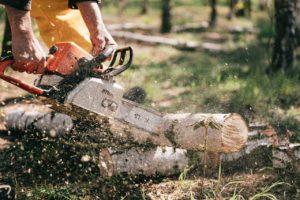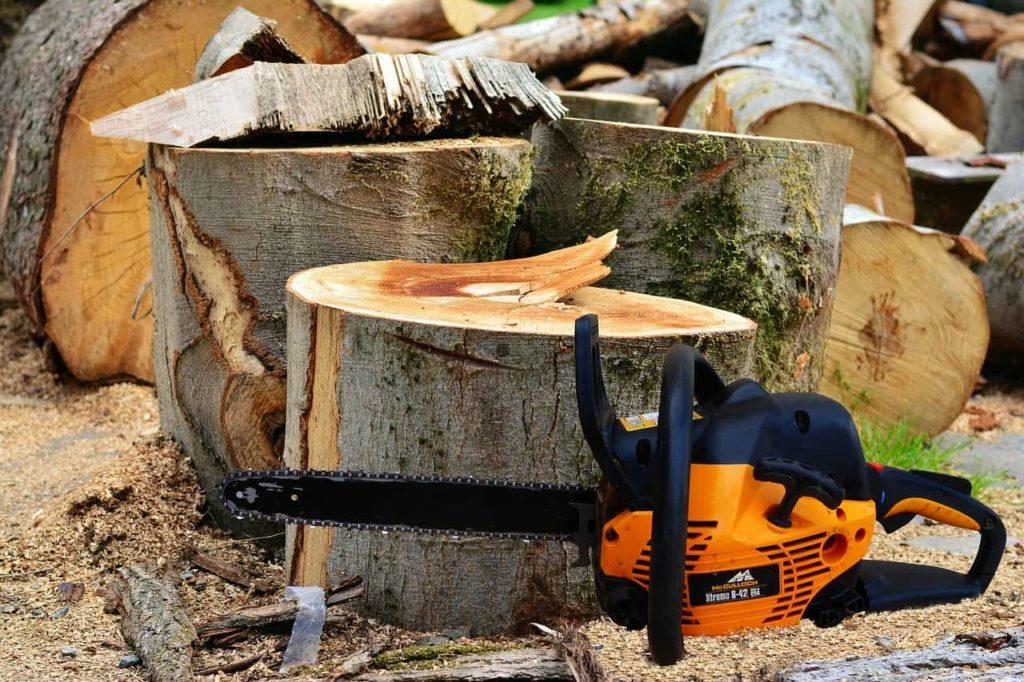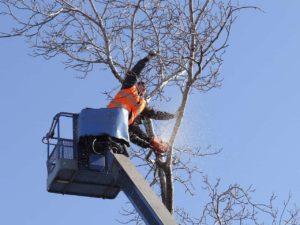Forest conservation by-laws have been on the books in our province for over 50 years. Most municipalities pass these laws to prevent the destruction of mature trees that are important to the health of the environment, leading many to call the by-laws “tree cutting laws.”
Illegal cutting is a serious offence, and in London, it carries a steep penalty. What circumstances lead to illegal tree cutting in London?
What Is Illegal Tree Cutting? 
Illegal tree cutting is the removal of trees protected by municipal, provincial, and federal laws, or doing so without a permit. Every municipality can pass their own by-laws restricting and regulating the destruction of trees by cutting, burning, etc. The City of London Tree Protection By-law protects trees on private land that the city classifies as “Distinctive,” or if the tree is within a designated Tree Protection Area. Even if the tree is on your property, you may need to apply for a permit to cut it down.
Many by-laws recognize the right of landowners to make decisions related to the trees on their property. They try and encourage landowners to seek the assistance of professional arborists to sustainably manage their forests for the financial and ecological benefits. However, people still feel the need to disobey local by-laws and cut down trees. Why is that?
Why Do People Illegally Cut Trees?
Around the world, illegal logging is done as a source of fuel, to clear more land for ranching, and because poachers can make money selling the wood of rare trees. Here in Ontario, these problems aren’t as prevalent, but people still break the law by cutting down trees for financial reasons.
A common perpetrator of illegal cuts is “rogue” property developers who clearcut lots without permits. One property owner in Ancaster was handed a $420,000 fine for illegally clear-cutting dozens of trees on a property in 2014. He was charged under the City of Hamilton’s By-Law 2000-118, prohibiting the cutting of “heritage trees larger than 45 centimetres in diameter” without a permit.
However, the majority of people who illegally cut trees are those who do so without knowing they’re breaking the law! Here’s how you can tell if you need a permit before cutting down a tree on your property.
How To Tell If You Have A Protected Tree
A tree is a protected Distinctive Tree if it’s greater than or equal to 50 cm in diameter and within the Urban Growth Boundary of the City. You can calculate the diameter of the tree by measuring the circumference at a height of 1.4 metres above ground level using a regular tape measure. Dividing the figure by Pi (3.1415) will get you the diameter!
However, a Tree Protection Area prevents anyone from cutting down a tree, regardless of its size, even on private property. If someone removes a protected tree without a permit or if they fail to plant a replacement, the City could fine them up to $1,000. You don’t need a permit to prune a tree as long as the work follows good arboricultural practices.


